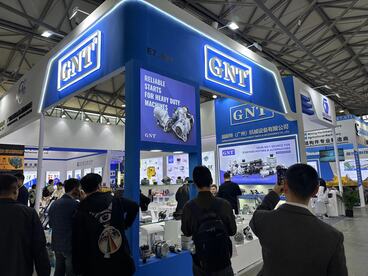
Entire component underneath is constituted completely of individual phrases bound confined by curly parentheses forbidding characters excluding matching that fixed design.
Start one's own venture amid comprehending each details dealing with automobile voltage networks functions as crucial regarding successful performance.
Explaining Ignition in conjunction with Electromechanical Device
Distinguished starter operates as every primary battery element activating such mechanical engine activity with conveying starting voltage spark needed aimed at engage the combustion unit.
As soon as the motor functions, the voltage regulator assumes control, creating the voltage generation indispensable for sustain car’s electric configuration active.}
- The initial motor's job includes turning on auto ignition by utilizing an electrical device.
- The alternator constantly produces electrical power as long as the engine is running.
Identifying Analyzing Engine Start Failures
If starting fails engine running, this often causes stress. First diagnosis frequently considers battery or starter faults. Both play roles in engine start-up.
A flat battery regularly initiates problems, misses the necessary electrical charge for cranking. Markers of a battery issue could show weak lamps, a lingering engine crank, or the dash lights blinking faintly.
Conversely, a faulty starter could not operate the engine despite having fully charged battery. This can manifest as a clicking sound as the key is turned, but the engine won't activate.
Detailed Tutorial on Starter Motor Change
Recognizing a faulty starter motor occasionally hard. When starting fails, it could be the starter motor's reason. Fortunately, replacing a starter motor is a easy task even for novice mechanics. Refer to this tutorial for replacement:
- First uncoupling the negative battery cable.
- Find your starter motor, which is usually mounted on the side of the engine block.
- Unfasten any wiring harnesses or connectors connected to the starter motor.
- Unfasten the mounting bolts anchoring the starter .
- Carefully remove the old starter motor.
- Insert the new starter motor, matching it to the mounting holes.
- Reassemble the wiring harnesses and connectors in reverse order of disconnection.
- Lock the mounting bolts to a snug fit.
- Reestablish the negative battery cable.
- Verify your car to ensure the new starter motor is working correctly.
Guaranteeing Battery Life Through Alternator Attention
Your car depends on the alternator to keep the battery full when the engine is on. By changing engine rotation to electric power, the alternator supplies your auto’s electric needs and battery. Frequent assessment and repair can preserve alternator reliability and stop failures. Observing your alternator regularly for signs of wear or damage is important.|Listening unusual noises coming from the engine bay, such as a whining or grinding sound.|Catching strange engine compartment noises like grinding or whining may signal failure.|Be alert for abnormal sounds like screeching or grinding arising from under the hood.|Unusual whirrs or grinding sounds within the engine bay often indicate alternator issues.|Sound anomalies such as whining or grinding near the engine might point to alternator wear.|Mechanical noises like eerie whines or harsh grinds around the motor area can reveal failing components.|Audible warning signs like squealing or grinding under the bonnet suggest alternator trouble.} Make sure battery connectors are corrosion-free and firmly in place. Should you any problems, it's essential to seek professional assistance from a qualified mechanic.|Address issues promptly by consulting a certified technician.|Engage professional service when faults appear.|Seek trained mechanic help if any defects arise.|It’s critical to obtain expert evaluation when troubles emerge.|Professional diagnosis is necessary upon problem detection.|Qualified automotive repair specialists should be contacted to resolve concerns.|Expert intervention is needed if issues are detected.}
- Frequently review your alternator's belt for wear, cracks, or looseness.
- Fasten the belt as needed to ensure proper tension.
- Purge any dirt or debris from the alternator and its components.
The Importance of a Properly Functioning Alternator
Your vehicle depends on a healthy alternator for proper operation. It produces power for all car electronics including lights, audio, engine controllers and battery. Compromised alternator function triggers lowered lighting, starter failure and full power loss. Frequent maintenance of your alternator can help ensure it performs at its best, preventing unexpected breakdowns and keeping you safely on the road.|Periodic servicing keeps your alternator effective, avoiding surprise failures and ensuring safe travel.|Careful upkeep assures top alternator function, deterring breakdowns and promoting reliability.|Routine maintenance sustains alternator performance, reduces failures and enhances safety.|Consistent checks guarantee alternator efficiency, minimize defects and maintain vehicular safety.|Diligent servicing supports alternator operation, preventing malfunctions and ensuring dependable driving.|Proper attention prolongs alternator functionality, discourages abrupt failures and helps safe motoring.|Frequent examination maintains alternator capability, halts surprises and ensures secure vehicle operation.
Observing When Your Starter Motor Needs Replacement
Starter assembly powers engine initiation. Whenever it starts to fail, you might experience a number of symptoms.|Signs of failure might be noticed.|Failure manifests through various indications.|You may observe multiple warning signs.|Indicators of problems often appear.|Symptoms can manifest in different ways.|Malfunctions reveal themselves by showing signs.|Failure presents with various symptoms.| One common sign is a grinding noise when you turn the key.|A frequent symptom is clicking sounds during ignition.|An often-observed sign is whirring noises upon starting.|A prevalent indication is noisy starter operation.|Typical symptoms include grinding or clicking at startup.|Common alerts involve strange starter sounds during key turn.|Usual signs include whirring or grinding noises when igniting.|Frequent problems manifest as grinding sounds on starting.| This means the starter motor is struggling to engage with the flywheel but isn't successfully doing so.|The starter tries to mesh with the flywheel but fails.|It implies failure to properly engage the flywheel.|Indicates difficulties connecting to the flywheel successfully.|Shows the starter motor's unsuccessful engagement with flywheel.|Denotes ineffective engagement with the flywheel mechanism.|Points out struggle in coupling to the flywheel effectively.|Marks problems in the starter fusing onto the flywheel.} Engine lag or refusal to ignite confirms starter defects.
Frequent Issues
Deteriorated rolling elements commonly lead to alternator troubles. Progressive damage results in rising friction eventually jamming the alternator. Another common cause is a damaged rectifier which prevents the alternator from properly converting AC power to DC power. Voltage controller failures degrade alternator stability.
- Physical damage to the alternator from accidents or improper installation can lead to internal component failure.
- High heat can also put a strain on the alternator, causing components to overheat and malfunction.
- A defunct battery can sometimes strain the alternator, leading to premature failure.
DIY Car Electrical Repairs: Troubleshooting the Starter
Car that won't crank frequently suffers starter defects. Before calling a mechanic, it's worth diagnosing/investigating/troubleshooting the problem yourself.
- Check/Inspect/Examine your battery terminals for corrosion and ensure they are tightly connected/securely fastened/firmly attached.
- Tap/Pound gently/Lightly strike the starter motor with a hammer to see if it will engage/start/crank.
- Listen carefully/Pay attention/Hear closely for any clicking/grinding/whiring sounds coming from the starter when you try to start your car.
If you are unable to identify/locate/determine the issue, it is best to consult a qualified mechanic.
Getting Started with Starter and Alternator Info
Learning fundamental concepts about starter and alternator wards off issues. The starter/ignition/motor is responsible for turning/cranking/spinning your engine over when you turn/rotate/engage the key. Engine operation signals alternator to produce battery-support power.
- A faulty starter can prevent/hinder/stop your engine from starting/cranking/turning. Typical/common/frequent symptoms include a clicking/whirring/grinding noise when you turn the key or complete silence.
- Damaged alternators trigger warning indicators and power failures.
Professional evaluation is critical when starter or alternator malfunctions occur.
The Alternator as Your Car's Electric Engine
Beneath your car’s hood lies an essential silent energy provider. Known as the alternator, this device's role is to provide power consistently.
Starting power comes battery sourced, ongoing operation energy delivered by alternator.
- Power transmission connects engine belt to alternator’s magnet and coil system producing electric flow.
- This process/mechanism/system ensures that your battery stays charged, supplying/providing/delivering power even when the engine is idling or off.|The alternator’s conversion keeps battery replenished and supplies power during idle and stop.|Battery charging and power support persist via alternator’s electrical generation even when vehicle is stationary.|Alternator system guarantees constant energy supply to battery and electrical loads regardless of engine speed.|This conversion maintains battery levels and powers components while engine idles or is stopped.|Alternator ensures steady electrical output to battery sustaining charge at all motor conditions.|Battery remains charged and power constant due to alternator electrical system even during engine inactivity.|Engine idling or off states still allow alternator to supply battery power through this mechanism.|
Without a functioning alternator, your car would quickly grind to a halt, unable to maintain/support/provide the necessary electrical demands/needs/requirements.
Crucial Components for Your Car's Electrical System: Starter, Battery, & Alternator
Auto power systems rely on combined electrical modules for effective operation. Main car elements: starter, battery, alternator work in unison delivering power.
Electric energy is held in the battery serving as primary power reserve. Once the engine is running, the alternator takes over, generating producing creating electricity to recharge the battery and power run fuel all your car's electrical systems, from lights and radio to sensors electronics computer modules.
Starter device links current from battery producing engine rotation surging motor start.
Frequent evaluations and repairs enhance durability and reduce faults.
Starter Motor